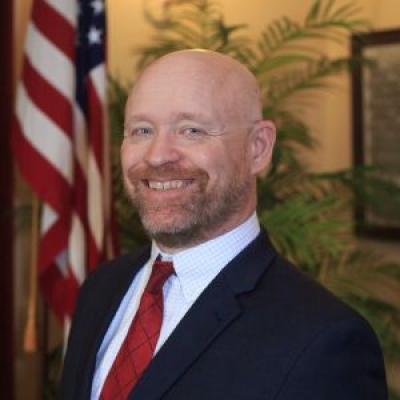Under the bold leadership of Governor Mike DeWine and Lt. Governor Jon Husted, Ohio lawmakers enacted the Quality Community Schools Support Fund (QCSSF) in 2019. The program—the first of its kind in the nation—provides additional state dollars to support high-performing public charter schools (also known as “community schools” in Ohio). From FY20 to FY23, between 20 and 40 percent of Ohio’s 320-some charters met the state’s performance criteria and received an extra $980 to $1,600 per pupil, depending on the year. Though it’s too early to study its impacts, lawmakers in last year’s state budget further increased program funding starting in FY24.
QCSSF helps address longstanding funding gaps faced by Ohio charters, which have historically received about 30 percent less taxpayer support than nearby districts. This shortfall has exposed charters to poaching by better-funded districts that can attract teachers via superior pay. It has also limited charters’ capacity to provide extra supports for students, most of whom are economically disadvantaged and could use supplemental services such as tutoring. The gap has also required charters—even high-performers—to operate on a shoestring, leaving them little room in their budgets for expansion. Besides limiting these schools in practical ways, underfunding charter students’ educations by virtue of their choice of public school is simply unfair.
We at the Thomas B. Fordham Institute have proudly advocated for QCSSF. To be sure, even with the most recent boost in funding, it still doesn’t quite achieve the ambition of full funding equity for all charter students. But it does represent a big step forward. Given our support for the program, it might be surprising to see our interest in also evaluating it. Why put it under the research microscope and risk dinging it?
For starters, while you’ll often find us backing choice-friendly initiatives, we also seek programs that work for students. To that end, Fordham has commissioned studies that shed light on policies we broadly support (evaluations of private school scholarships and inter-district open enrollment being two examples). Sometimes the results are sobering—and have led us to pursue course corrections—and at other times, they’ve provided encouragement to press onward. In sum, we remain committed to rigorous analysis that helps policymakers and the public understand how education initiatives function and how they impact students.
We are also mindful that initiatives lacking follow-up research and solid evaluation are more susceptible to the chopping block. Consider one example. Back in 2013, Ohio lawmakers launched a brand-new, $300 million “Straight A” fund that aimed to spur innovative practices. The program was initially greeted with enthusiasm but just five years later it had vanished. One likely factor is that no one got under the hood to study the program, which allowed skeptics to more easily cast doubt on its efficacy. Without evidence to guide their decision-making, policymakers may well have assumed it wasn’t working and chose to pull the plug whether or not it was actually boosting achievement.
With this in mind, we sought to investigate—as soon as practically possible—whether QCSSF is achieving its aims. Conducted by Fordham senior research fellow and Ohio State University professor Stéphane Lavertu, this analysis examines the program’s impacts on qualifying charter schools’ staffing inputs and academic outcomes. The study focuses on data from 2021–22 and 2022–23—years three and four of program implementation—as the prior two years were disrupted by the pandemic. To provide the clearest possible look at the causal impacts of the extra dollars provided by QCSSF, Dr. Lavertu relies on a rigorous “regression discontinuity” statistical method that compares charters that narrowly qualified for QCSSF to charters that just missed meeting the performance-based criteria.
We learn two main things about the program:
- First, charter schools spent the supplemental funds in the classroom, most notably to boost teacher pay. As noted earlier, teacher salaries in charter schools have historically lagged. However, with the additional QCSSF dollars, qualifying charters were able to raise teacher pay by an impressive $8,276 per year on average. This allowed schools to retain more of their instructional staff, as indicated by a reduction in the number of first-year teachers as a percentage of their overall teaching staffs.
- Second, students attending qualifying schools made greater academic progress in math and reading than their counterparts attending non-QCSSF charters. Based on an analysis of the state’s value-added scores—a measure of pupil academic growth on state assessments—Dr. Lavertu’s most conservative estimates indicate that the supplemental dollars led to additional annual learning that is equivalent to twelve and fourteen extra days in math and reading, respectively. In addition to these achievement effects, he also finds that QCSSF reduced chronic absenteeism by 5.5 percentage points.
Various factors could have driven the academic results, including the ability to implement high-quality curricula or tutoring programs with the QCSSF dollars. But we suspect a particularly strong connection between the reduced teacher turnover and the positive outcomes. Provided that turnover is not caused by efforts to remove low-performing instructors, studies indicate that high levels of teacher turnover—something Ohio charters have struggled with because of their lower funding levels—hurts pupil achievement. The QCSSF dollars, however, have allowed charters to pay teachers more competitive wages and retain their talented instructional staff—thus helping to improve achievement.
Leaders of high-performing charters (including those sponsored by our sister organization, the Fordham Foundation) agree that the additional resources have proven pivotal. Andrew Boy, who leads the United Schools Network in Columbus, said, “Since the addition of the QCSSF, we’ve been able to vastly improve teacher pay to attract and retain more effective, experienced staff, which allowed us to serve more students and deliver on our mission.” Dave Taylor, superintendent of Dayton Early College Academy (DECA), said, “We have used these funds to address key strategic areas of focus: increasing teacher compensation, ensuring we have high quality instructional materials in all classrooms, and taking control of our students’ transportation. The QCSSF has truly been instrumental in DECA’s ability not only to weather the challenges of the pandemic but to be well positioned to serve students well long into the future.”
The findings from this report should encourage Ohio policymakers to keep pressing for improved charter funding. They should also ease concerns voiced by skeptics that charters would not put these additional dollars to good use (“obscene profits on the backs of students is the charter standard,” one bombastic critic said last year). Au contraire: The charters that qualified for the QCSSF program used the funds primarily to boost teacher pay, and the result was that students benefited. Isn’t that something we can all cheer?
Fordham remains committed to fair funding for charter students and to shining light on the QCSSF program. Indeed, we intend to come back in the next few years with updated evidence on the program. But for now, one can confidently say that the program has so far worked as intended and driven improvement in Ohio charter schools.





